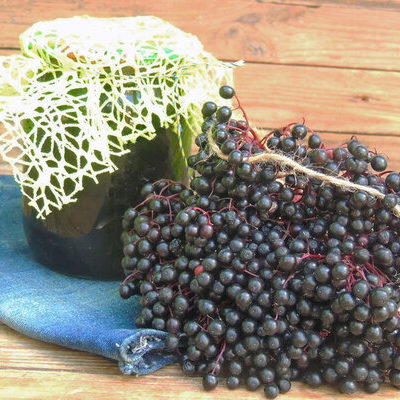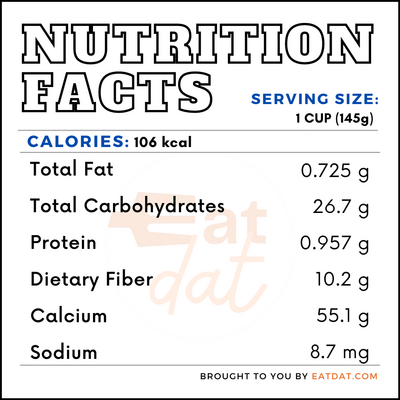
Elderberry
What is an Elderberry?
The elderberry is the fruit of the elder plant or Sambucus nigra. This plant is considered either an overgrown shrub or a small tree. Elderberries are deep blue or purple, colors that come from anthocyanins, a group of phenolic compounds.
- Elder trees are hermaphrodites and may have both male and female parts within the same flower.
- The berries must be cooked before consumption as they are poisonous.
A few ways to use elderberries in the kitchen include:
- Jelly
- Fizz
- Wine
- Syrup
- Pie
- Tincture
Origin of elderberry
Elderberries have been used in traditional medicine to cure a common cold and flu in cultures across Europe, North Africa, and Asia. The fruit was brought to the Americas by the colonists. Native Americans also used elderberries for healing. This fruit was used as a medicine in ancient Greece, and Hippocrates called elderberry “nature’s medicine chest”. It was even considered a holy tree in the Middle Ages.
Nutrition
The nutritional value for 1 cup (145 g) of elderberries is:

Elderberry must not be eaten raw since it contains cyanogenic glycosides, which are potentially toxic. These compounds may release cyanide during consumption. It is also better, in this respect, to pick only fully ripe fruits. These toxic compounds degenerate during heat processing, hence making it safer to consume cooked elderberries. However, elderberries have a range of nutritional benefits, as well.
Research has shown that elderberries have antibacterial and antiviral properties and can reduce the symptoms of cold and flu. Elderberries also contain vitamin A, B vitamins such as B1, B2, B6, and B9, vitamin C, and vitamin E. Copper, zinc, iron, calcium, phosphorus, and potassium are also available in this fruit. In addition, phytochemicals such as carotenoids, phytosterols, and polyphenols add to the health benefits of elderberries. All these nutrients give the fruit antioxidant, antidiabetic, anti-inflammatory, immune-modulating, and antidepressant properties.
Commercial production
There is the very little commercial production of elderberries. This fruit needs the sun to grow but can adapt to any type of soil. Their seeds are distributed through animal droppings. In the wild, they grow in woodlands, hedgerows, scrub, and wasteland.
Elderberries are often not sold in shops because of low demand. There is no global market for elderberries either for the same reason. However, elderberries are sometimes grown and sold locally. This fruit is often foraged, even today.
Elderberry recipes
Elderberries must never be eaten raw. Fortunately, there are a number of delicious recipes that can be used to cook elderberries, such as:
FDA regulations
The FDA regulates elderberries in their different forms. Its fruit juice must have at least an 11 percent concentration. Canned and preserved elderberries, as well as, preserves and jams made from the fruit are also regulated by the FDA.
References
Thomas, Liji. “What Is Elderberry?” News Medical Life Sciences, AZO Network, www.news-medical.net/health/What-is-Elderberry.aspx.
Młynarczyk, Karolina et al. “Bioactive properties of Sambucus nigra L. as a functional ingredient for food and pharmaceutical industry.” Journal of functional foods vol. 40 (2018): 377-390. doi:10.1016/j.jff.2017.11.025, https://www.ncbi.nlm.nih.gov/pmc/articles/PMC7185606/
Tiralongo, Evelin et al. “Elderberry Supplementation Reduces Cold Duration and Symptoms in Air-Travellers: A Randomized, Double-Blind Placebo-Controlled Clinical Trial.” Nutrients vol. 8,4 182. 24 Mar. 2016, doi:10.3390/nu8040182, https://www.ncbi.nlm.nih.gov/pmc/articles/PMC4848651
D. Charlebois, Elderberry as a Medicinal Plant, https://www.hort.purdue.edu/newcrop/ncnu07/pdfs/charlebois284-292.pdf
Elderberry guide: where to find, health benefits and recipe ideas, Country File, https://www.countryfile.com/how-to/foraging/elderberry-guide-where-to-find-health-benefits-and-recipe-ideas
